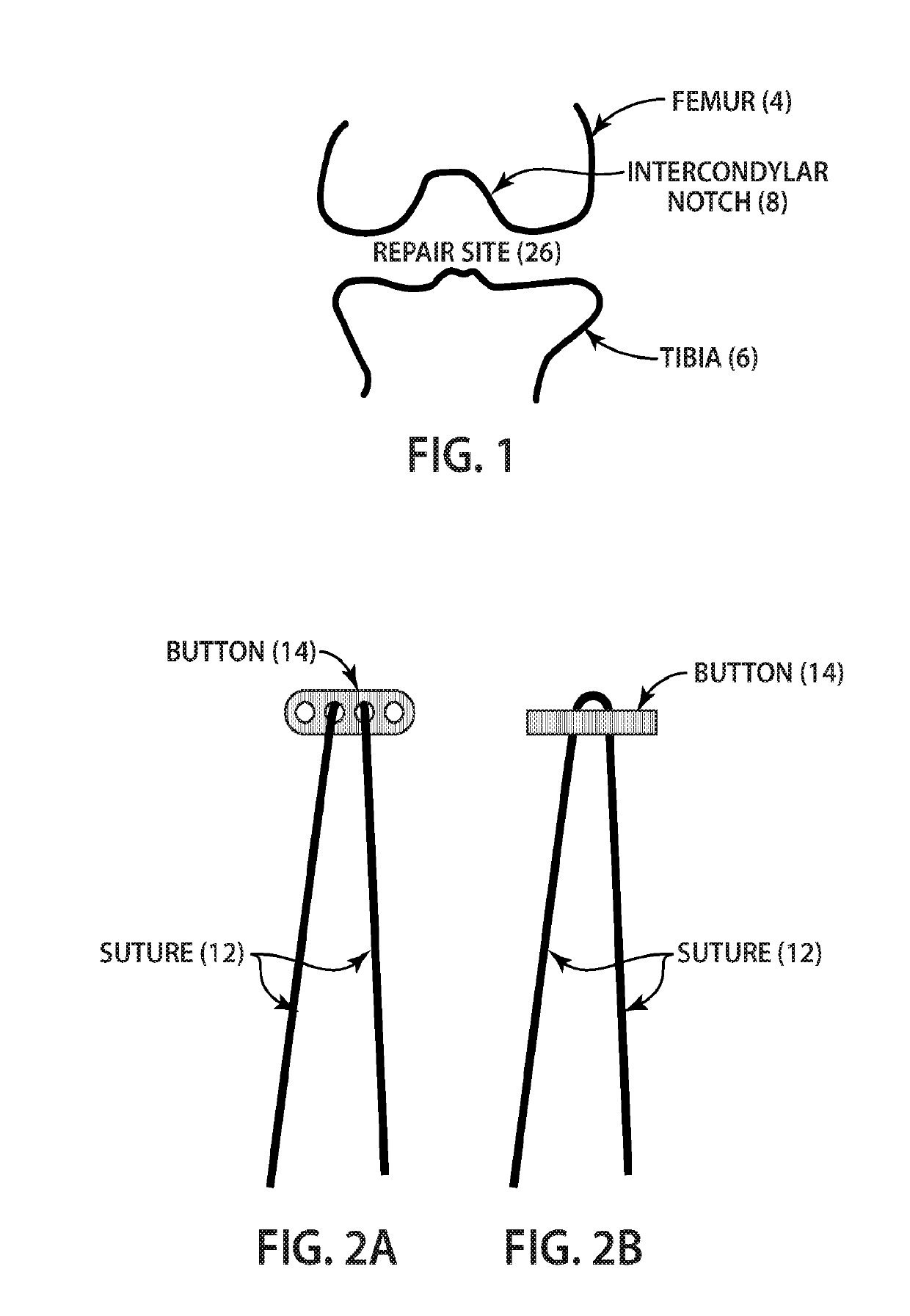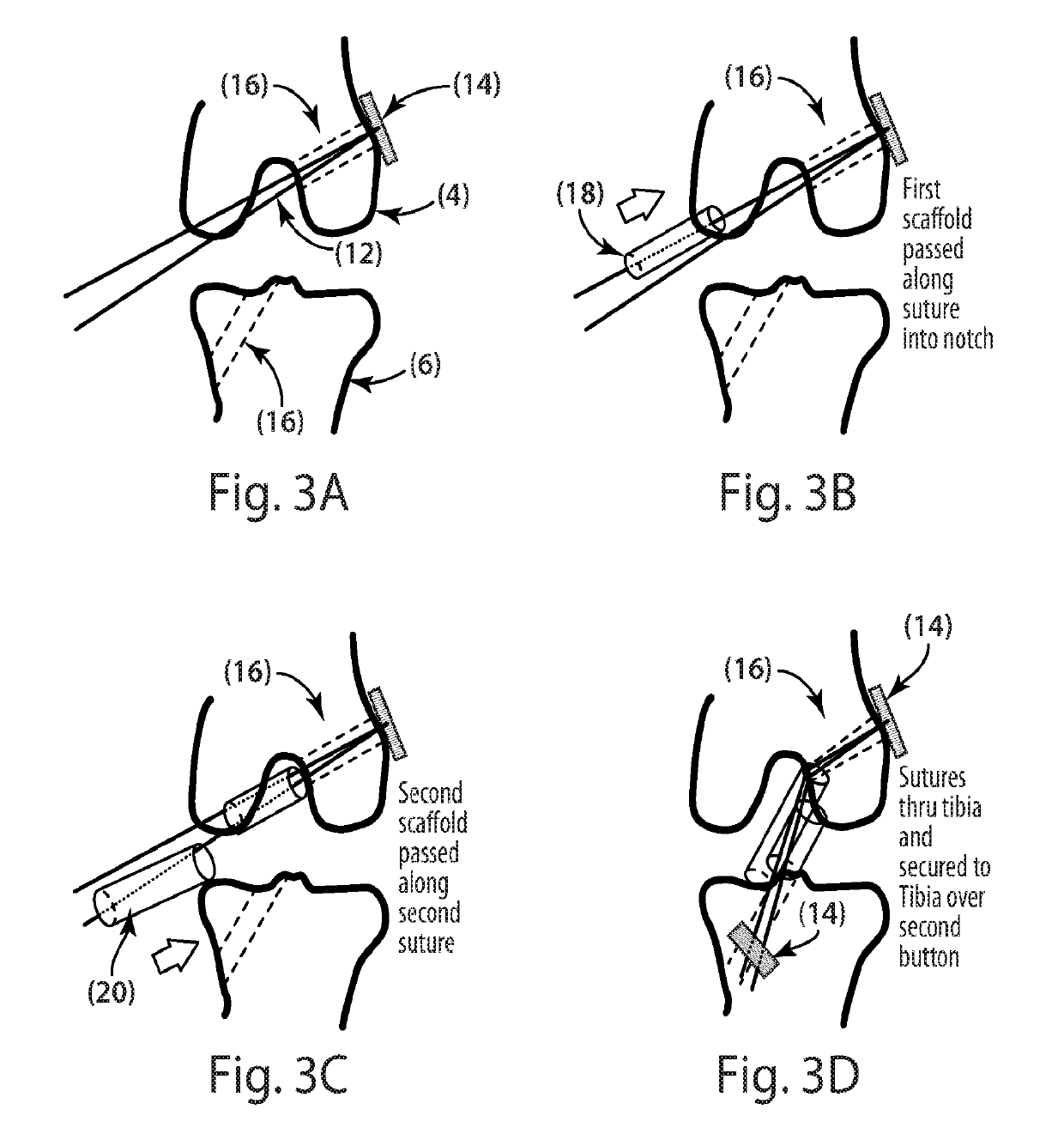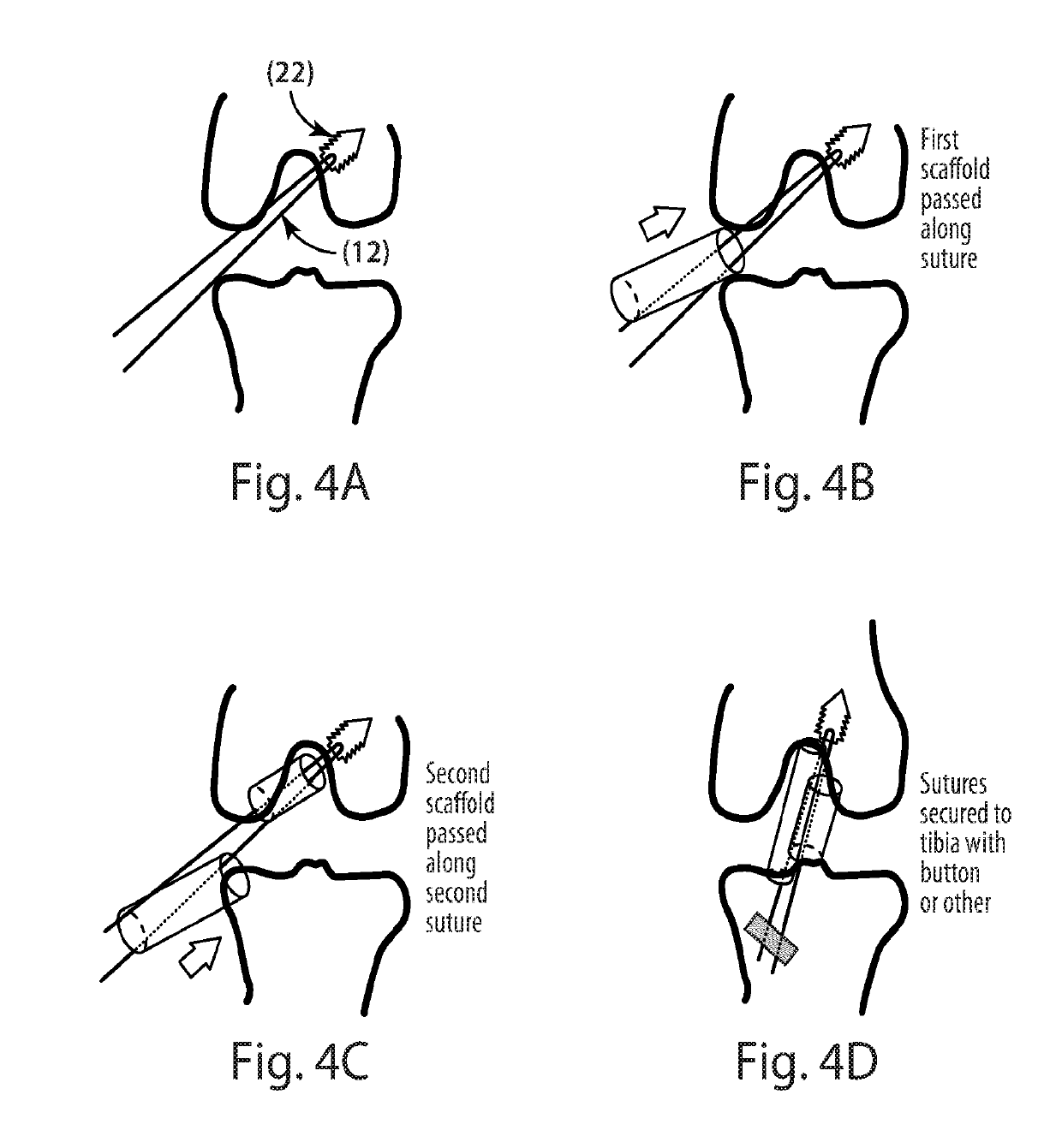Indirect method of articular tissue repair
a technology of articular tissue and indirect method, which is applied in the direction of ligaments, prostheses, surgery, etc., can solve the problem that multiple scaffold pieces would not provide sufficient strength
- Summary
- Abstract
- Description
- Claims
- Application Information
AI Technical Summary
Benefits of technology
Problems solved by technology
Method used
Image
Examples
example 1
n of the Effects of Multiple Discreet Scaffolds Versus a Single Intact Scaffold on Ligament Repair
[0126]Methods
[0127]Study Design
[0128]IACUC approvals were obtained prior to initiating the study. Sixteen late adolescent Yucatan mini-pigs underwent ACL transection and were then randomized to bio-enhanced ACL reconstruction with BPTB allograft using a bioactive scaffold(s) and bio-enhanced ACL repair using the same bioactive hydrophilic scaffold(s). The animals within each treatment group were allowed to heal for 12-months, respectively, at which time the hind limbs were harvested.
[0129]Preparation of the Extra-Cellular Matrix Scaffold
[0130]The bioactive hydrophilic scaffolds (MIACH, Boston Children's Hospital, Boston Mass.) were manufactured as previously described.28 A slurry of extracellular matrix proteins was produced by solubilizing bovine connective tissue. The collagen concentration was adjusted to a minimum of 10 mg / ml and lyophilized. For the bio-enhanced ACL reconstruction ...
example 2
Clinical Studies
[0143]Methods
[0144]Patients age 18 to 35 with a complete ACL tear who were less than one month from injury and who had at least 50% of the length of the ACL attached to the tibia on their pre-operative MRI were eligible to enroll in the BEAR group. Patients with a complete ACL tear who were within three months of injury were eligible to enroll in the ACL reconstruction group. Only patients determined to benefit from surgical intervention with autograft hamstring tendon graft were considered for this study. Patients were excluded from either group if they had a history of prior surgery on the knee, history of prior infection in the knee, or had risk factors that might adversely affect healing (nicotine / tobacco use, corticosteroids in the past six months, chemotherapy, diabetes, inflammatory arthritis). Patients were excluded if they had a displaced bucket handle tear of the medial meniscus which required repair; all other meniscal injuries were included. Patients were...
example 3
Large Animal Model Showing Efficacy of Placement of Multiple Scaffolds Around an ACL Graft
[0149]Methods:
[0150]Twenty one Yucatan minipigs underwent ACL transection and reconstruction with a bone-patellar tendon-bone allograft. Seven had no augmentation of the graft placed, seven had a cylindrical graft which was continuous along the entire length of the ACL graft, and seven had sets of multiple scaffolds packed in front of the graft. All animals survived for 12 weeks. Biomechanical testing of the ACL strength were performed at that time point.
[0151]Results:
[0152]The AP laxity values for the knees treated with the sets of multiple scaffolds packed in front of the graft were lower than that of the untreated ACLs and that of the ACLs treated with the continuous scaffold (at 30 degrees, the values were 3.3+ / −1.7 mm, 8.1+ / −3 mm and 7+ / −3 mm respectively, at 60 degrees, the values were 9+ / −1 mm, 13+ / −2.4 mm and 11+ / −3 mm respectively and at 90 degrees, the values were 8.4+ / −1 mm, 13.2+ / −2...
PUM
| Property | Measurement | Unit |
|---|---|---|
| length | aaaaa | aaaaa |
| concentration | aaaaa | aaaaa |
| concentration | aaaaa | aaaaa |
Abstract
Description
Claims
Application Information
 Login to View More
Login to View More - R&D
- Intellectual Property
- Life Sciences
- Materials
- Tech Scout
- Unparalleled Data Quality
- Higher Quality Content
- 60% Fewer Hallucinations
Browse by: Latest US Patents, China's latest patents, Technical Efficacy Thesaurus, Application Domain, Technology Topic, Popular Technical Reports.
© 2025 PatSnap. All rights reserved.Legal|Privacy policy|Modern Slavery Act Transparency Statement|Sitemap|About US| Contact US: help@patsnap.com



